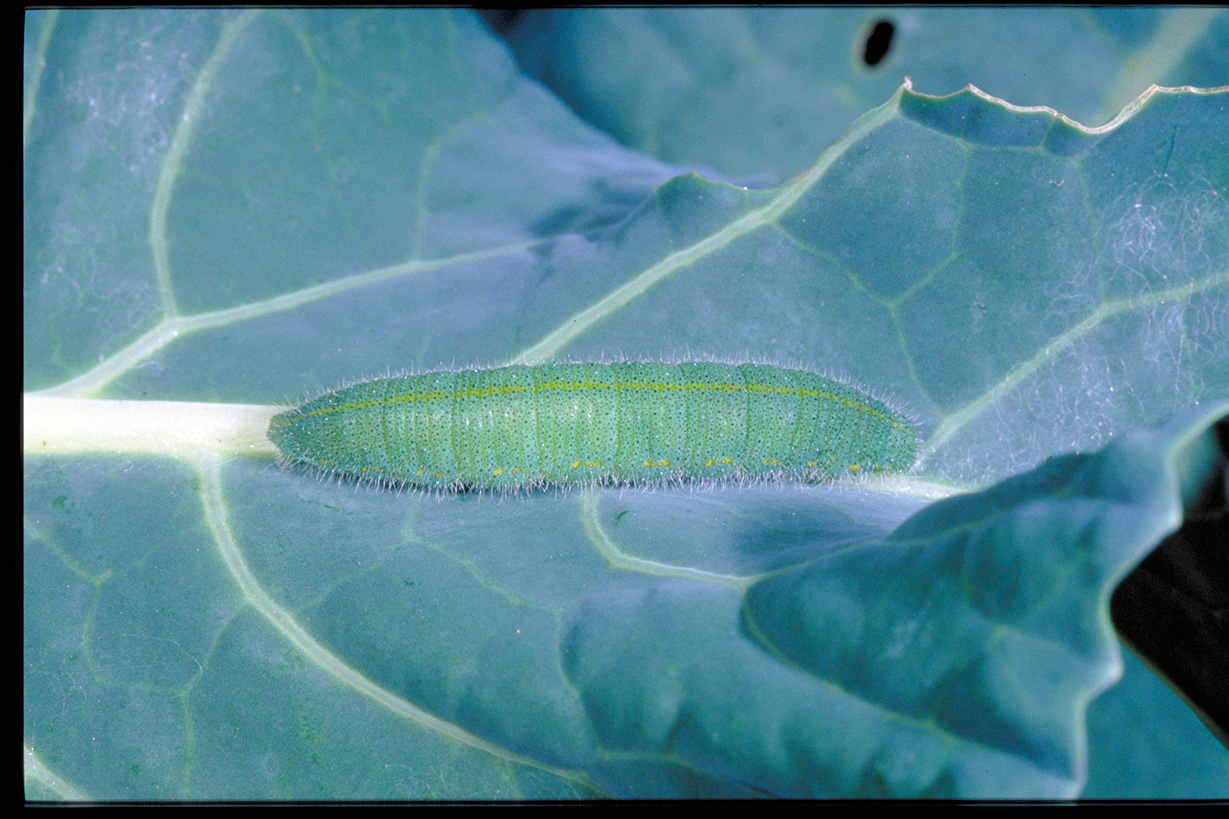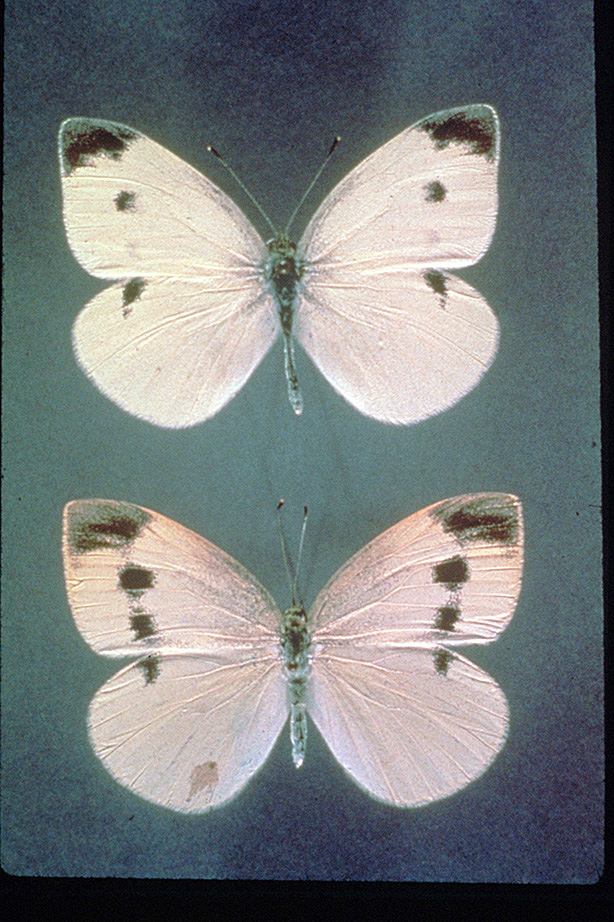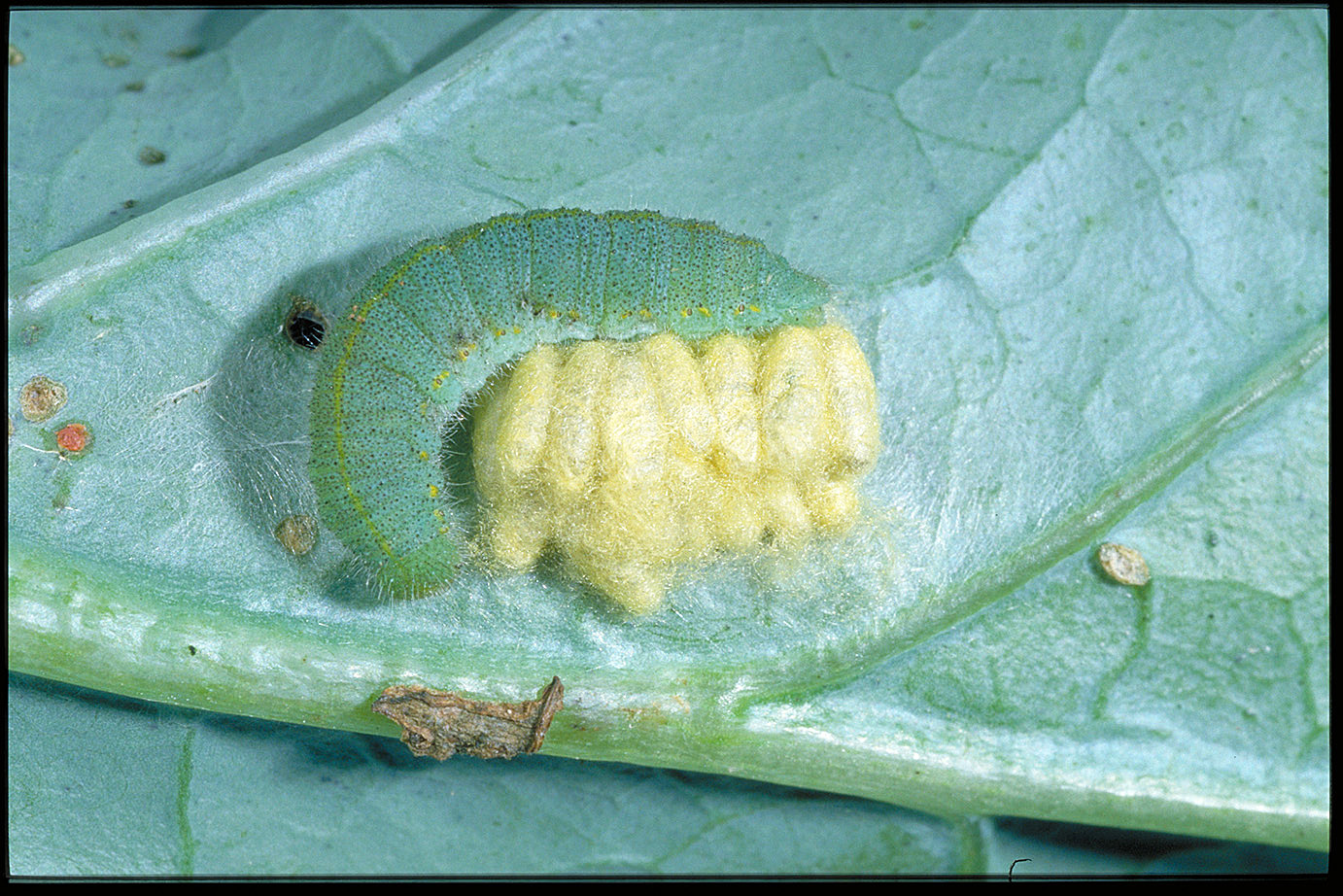Imported Cabbageworm
Return to Insect pests
Imported cabbageworm (Pieris rapae) larvae are velvety green with a narrow, light yellow stripe down the middle of the back and have four pairs of prolegs in addition to the three pairs of true legs behind the head. The larvae reach 1 1⁄4 inches in length. The pupae is greenish in color and attached to the undersides of cabbage leaves (without a silk case). The adult is a white butterfly with a few simple black markings. The bullet-shaped eggs are laid singly, have distinct ridges, and are initially white when laid but turn dark yellow as they mature. Imported cabbageworm cause similar damage as loopers, but feed closer to the center of the plant. Larvae are often concealed next to veins or the midrib on the underside of the leaves. Scouting for eggs and larvae should begin as soon as the white butterflies are seen flying about during the day. Late in the season, may of the larvae may become parasitized and wasp cocoons noticeable; do not include these in scouting counts.

Imported cabbage worm larvae
(Photo: UK Vegetable IPM Team, University of Kentucky)

Imported cabbage moth
(Photo: UK Vegetable IPM Team, University of Kentucky)

Wasp cocoons from an imported cabbage worm
(Photo: UK Vegetable IPM Team, University of Kentucky)
Management:
- Watch fields for white butterflies on warm days in the spring, this is an indication to begin scouting for eggs on leaves.
- Watch for larvae on the youngest leaves near the bud of the plant.
- Bt sprays can be very effective against this caterpillar.
